While some consider today’s featured plant an undesirable weed, ground cherry attracts many pollinators, including some specialist bees. The berries make tasty jam or pies and are a good food source for various birds, mammals, and even some turtles.
Several closely related Physalis species are native to most of the U.S. east of the Rocky Mountains. Clammy ground cherry (Physalis heterophylla) and smooth ground cherry (Physalis subglabrata) are prevalent in Iowa. Photographer and ecological consultant Leland Searles says he sees more of the smooth ground cherry along roadsides.
I took most of the enclosed pictures this month near the bank of Walnut Creek, where the Windsor Heights trail curves west toward Colby Park after passing Wal-Mart. The Illinois Wildflowers and Minnesota Wildflowers websites provide some tips on distinguishing the ground cherry species, and I think I was photographing smooth ground cherry–but I wouldn’t swear by that ID.
I never notice ground cherry until the fruit appears. Someone shared this picture in the Iowa Wildflower Report Facebook group in June, asking if anyone knew what was growing in her garden. Leland Searles identified the foliage as clammy ground cherry.
Ground cherries have a relatively long blooming period. New flowers will continue to appear weeks after the early flowers have transitioned to fruit. I took this picture in early August:
This past weekend I found many flowers still blooming in the same patch.
Since the blossoms hang down, it’s hard to see inside. I generally avoid touching the wildflowers I photograph, but I had to cheat to get this shot:
Iowa naturalist Eileen Miller shared a few pictures from her archive. Given the hairs on the foliage, I am reasonably confident this is clammy ground cherry:
Eileen was able to capture a nice view of the inside of a flower:
Like tomatillos, a related plant in the nightshade family, ground cherry fruits are encased in a husk. I’ve seen them for sale at the farmers market but haven’t harvested them in the wild. According to “Green Deane” of the Eat the Weeds blog,
The fruit is edible raw or cooked, as in pies or preserves. The fruit can fall from the plant before it is ripe. That usually takes a week or two or more until the husk has dried and the fruit a golden yellow to orange. Each fruit is wrapped in a husk that is NOT edible. The fruit will store several weeks if left in the husk. Unripe fruit — light green — is toxic. Ripe fruits are light to golden yellow. If any ripe fruit has a bitter aftertaste should be cooked first. If it is still bitter after cooking, don’t eat it.
My picture of fruit earlier this month:
Eileen’s shot of fruit:
If ground cherries are an unwelcome presence in your garden, be aware that
digging the plants out can be frustrating. Not only do the stems or upper root sections break easily, but there are strong lateral roots under the ground that remain to sprout again. […] These roots seem to be perennial, as the plants tend to come back in the exact same spot year after year.
Finally, here’s a picture I took in July 2016. That’s partridge pea blooming to the left of the ground cherry.
UPDATE: The wonderful Blue Gate Farm was selling ground cherries at the downtown Des Moines farmers market on August 25.

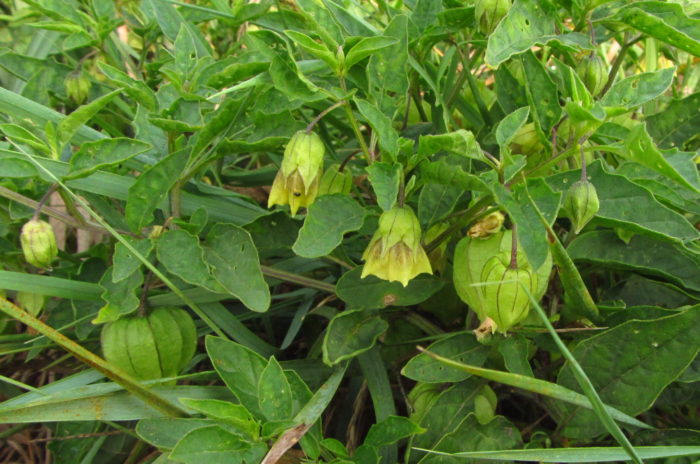
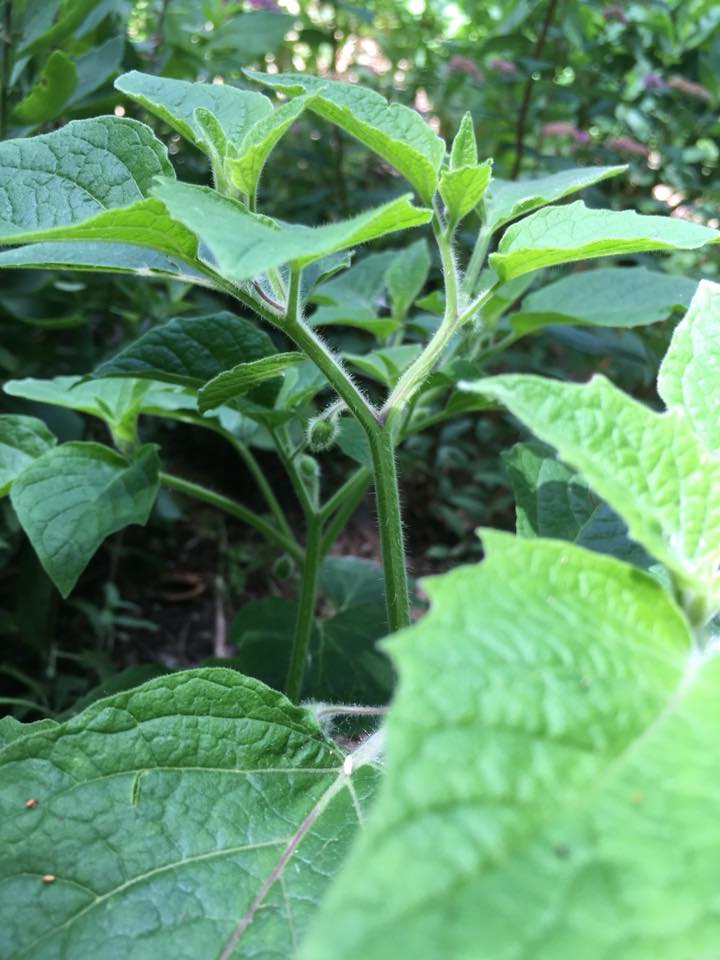
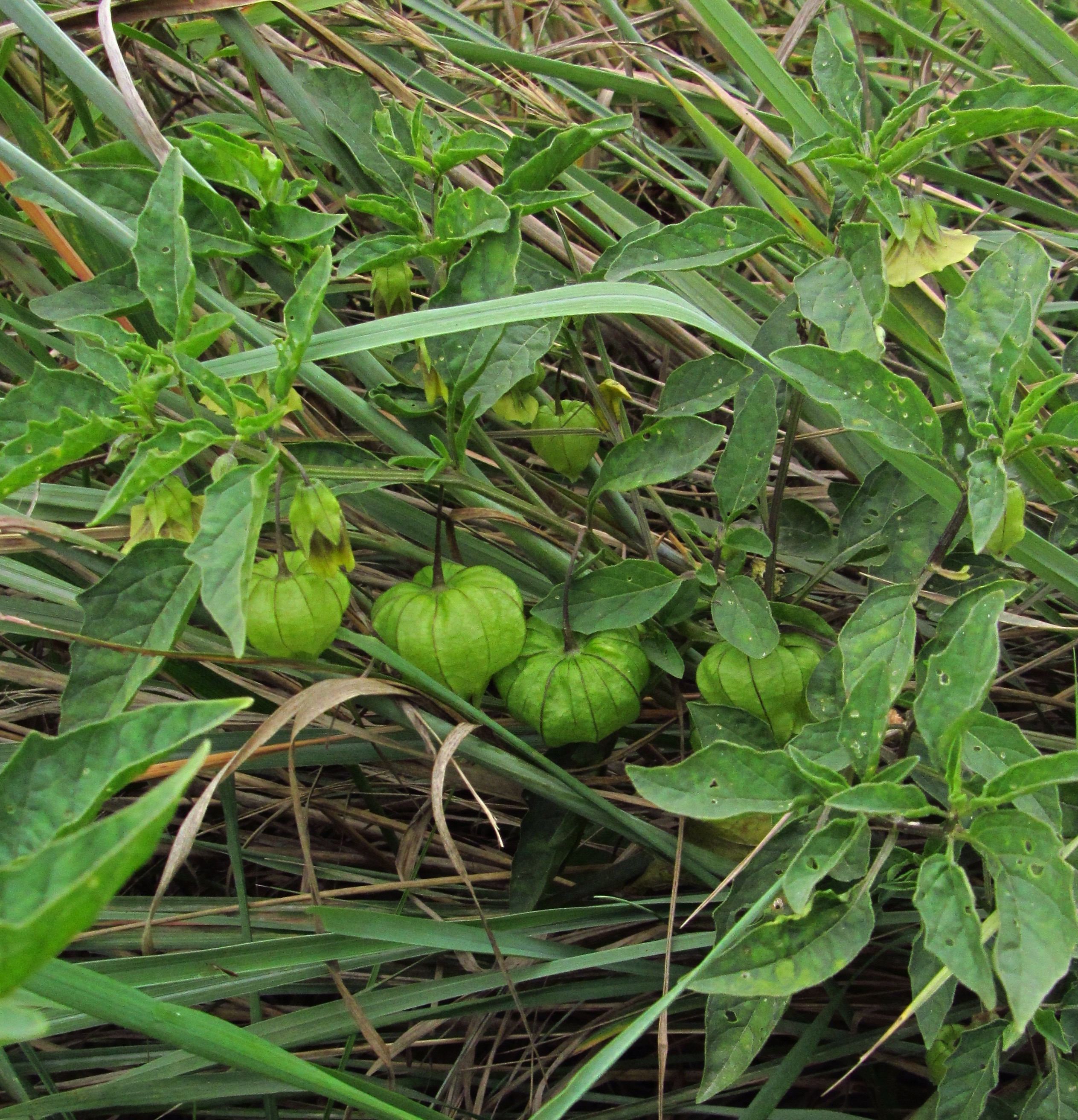
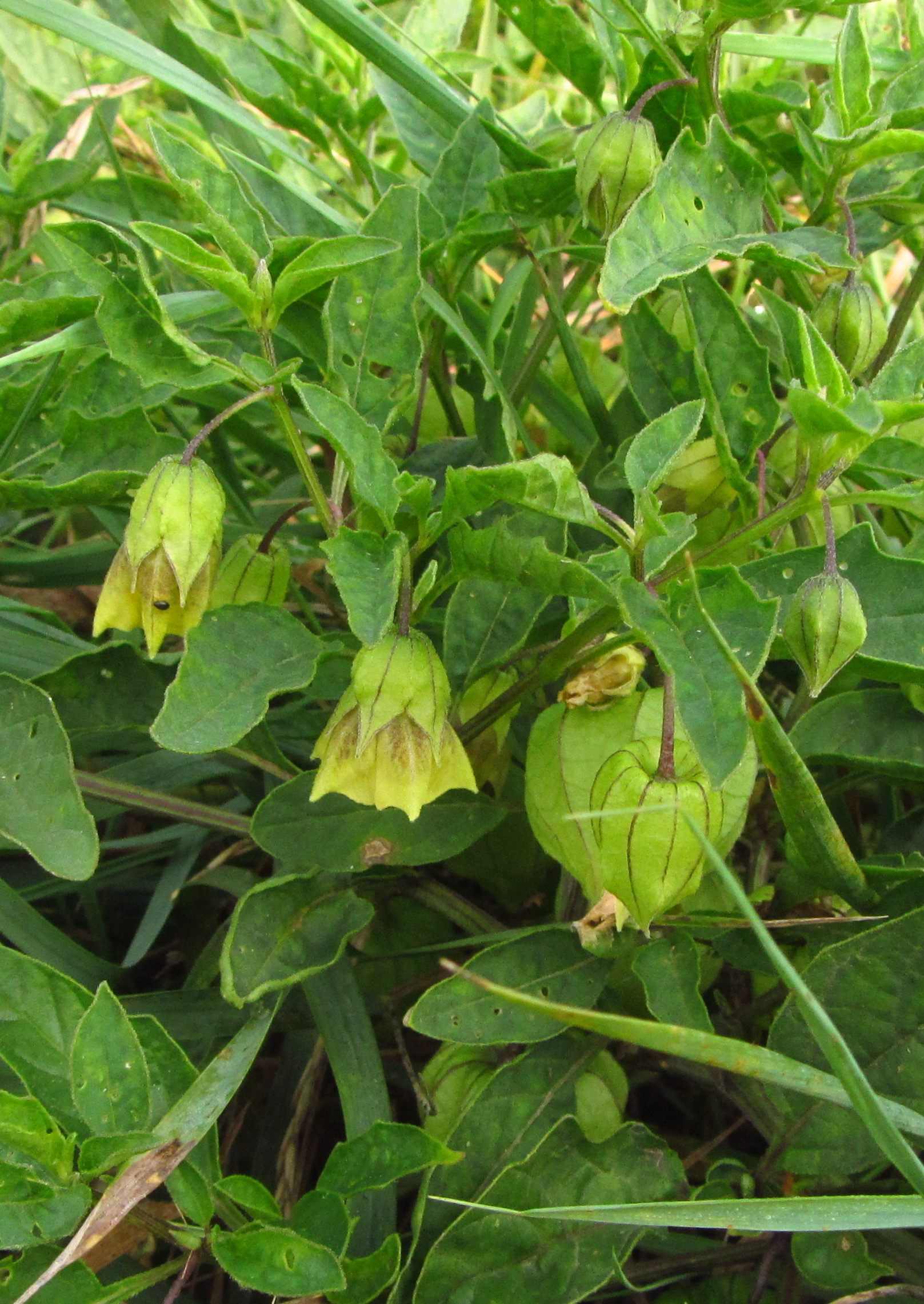
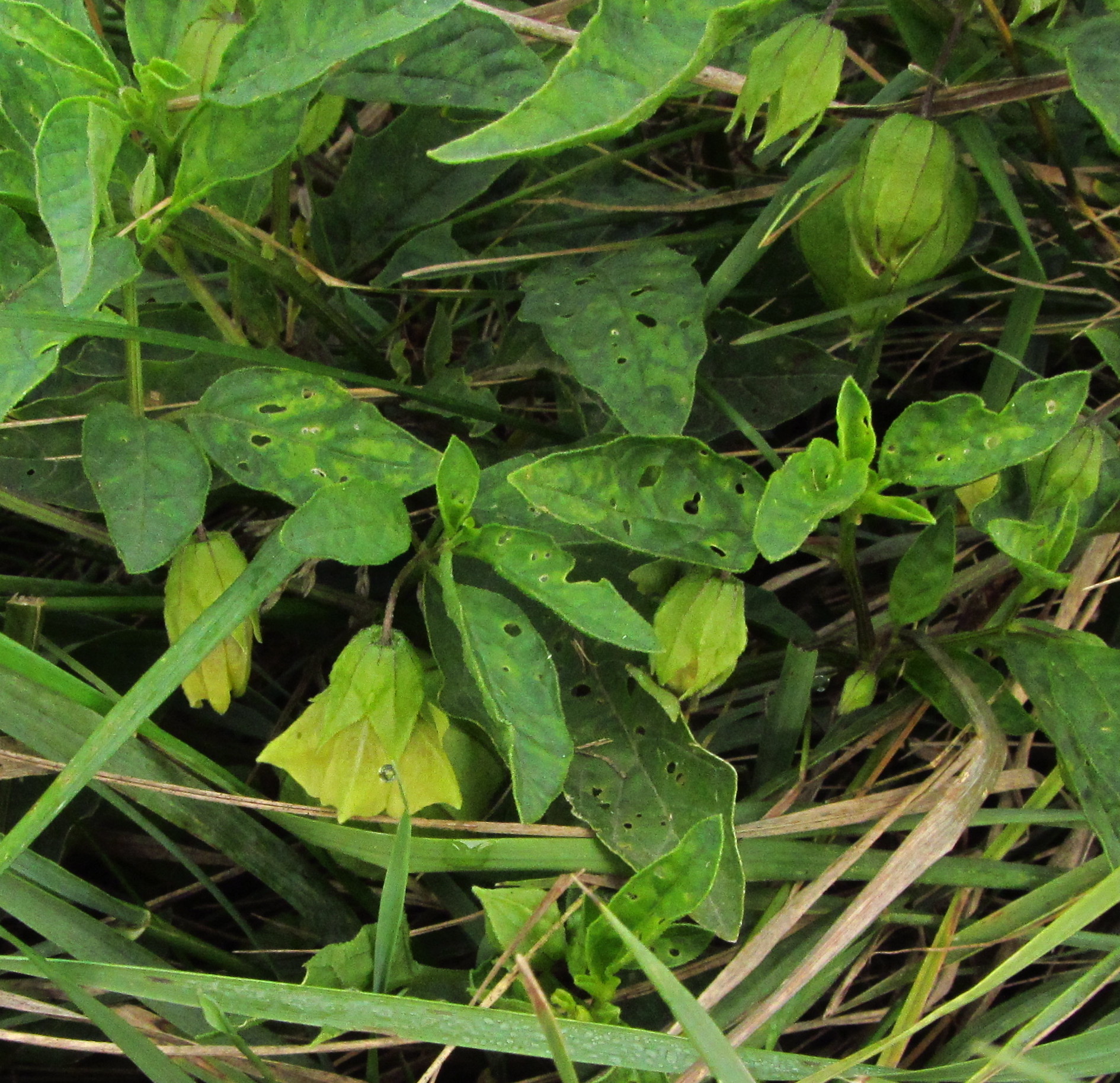
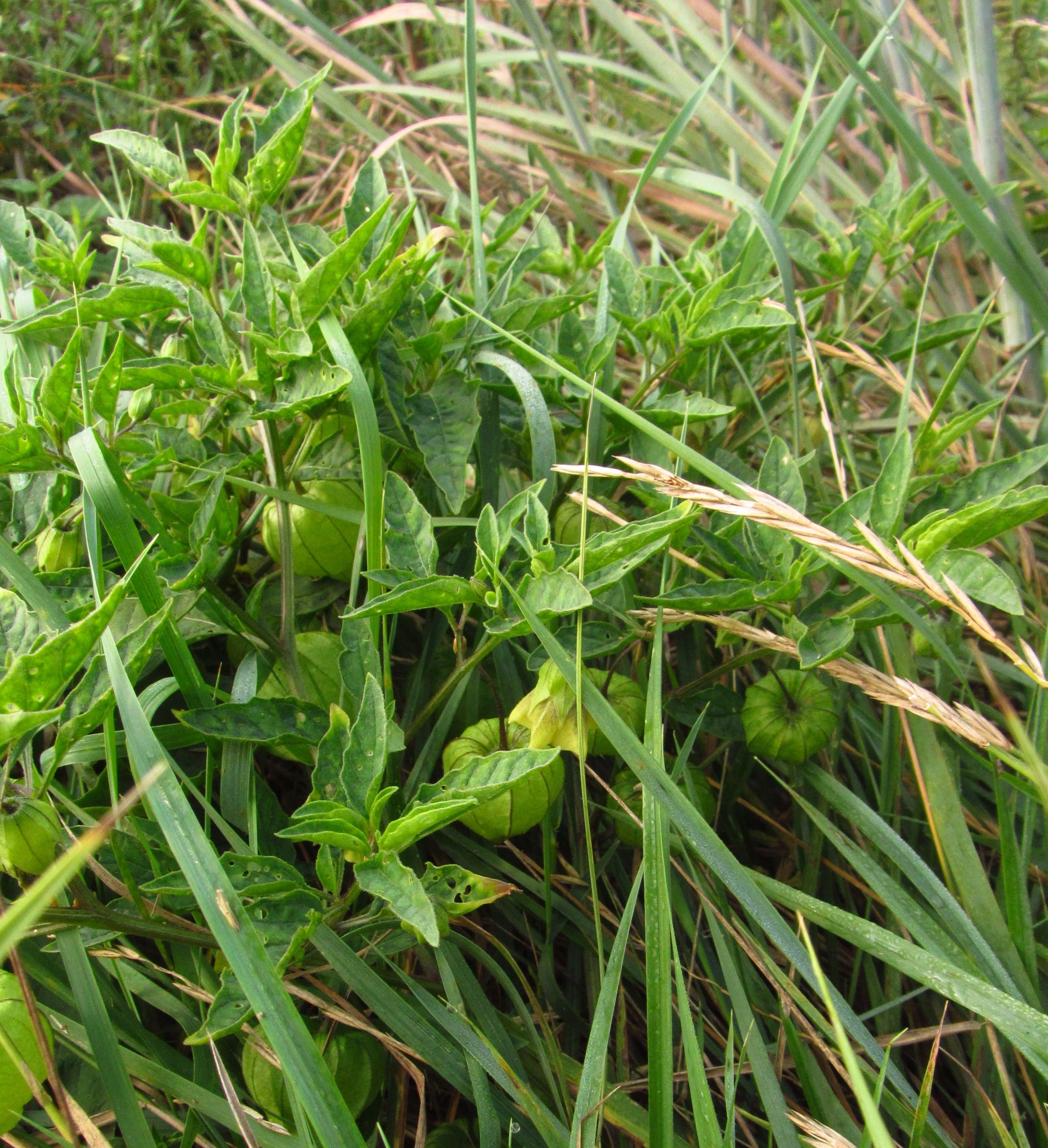
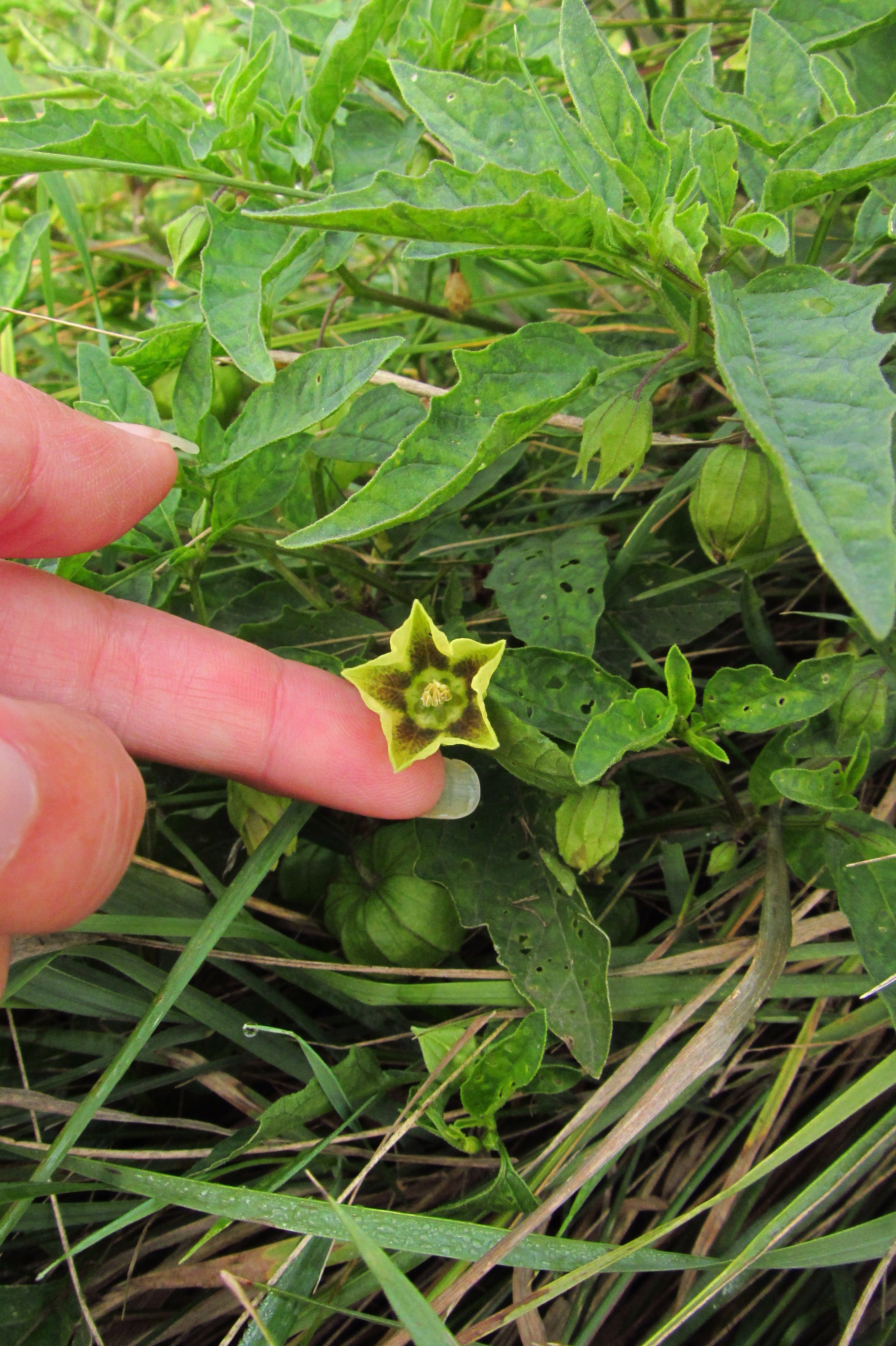
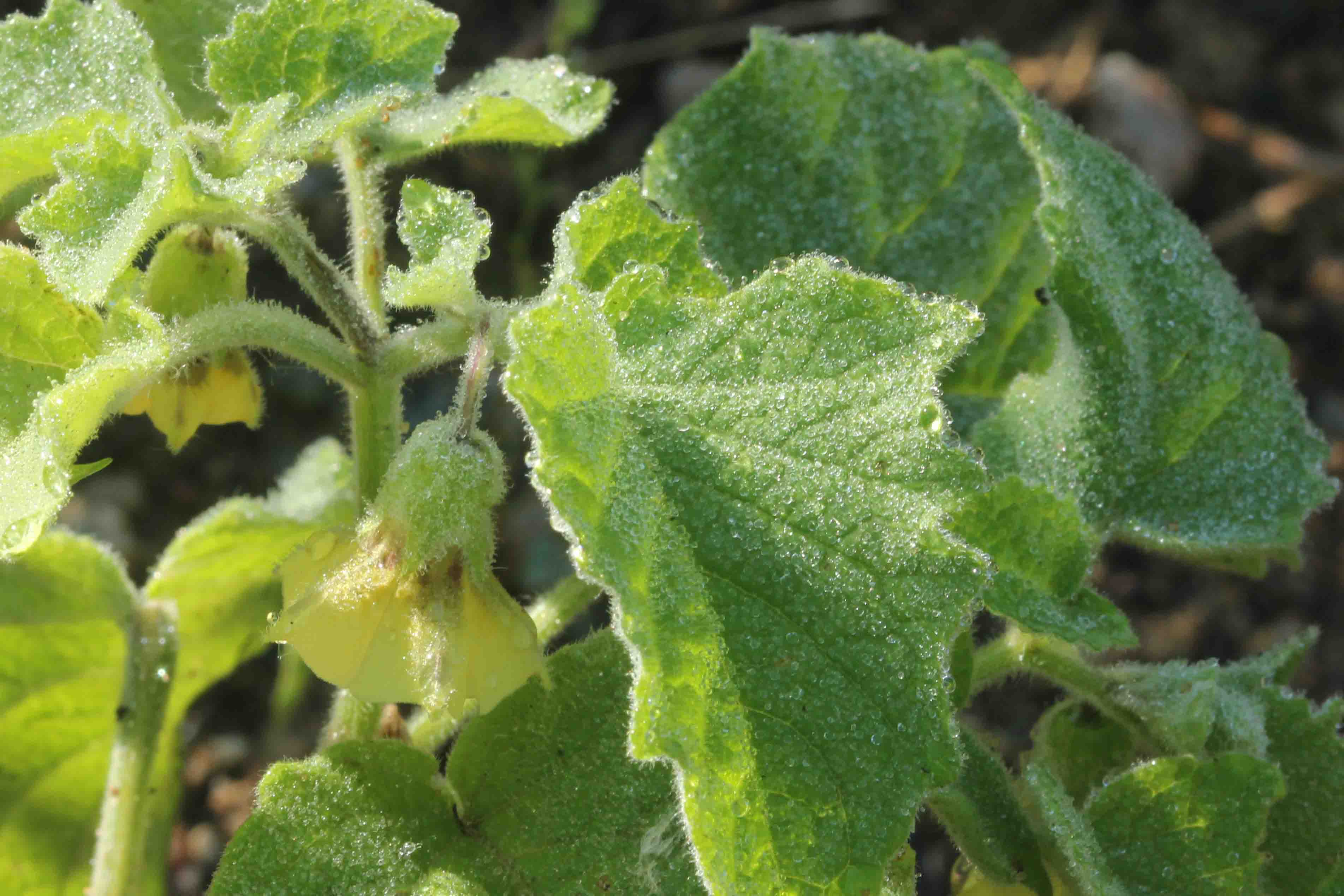
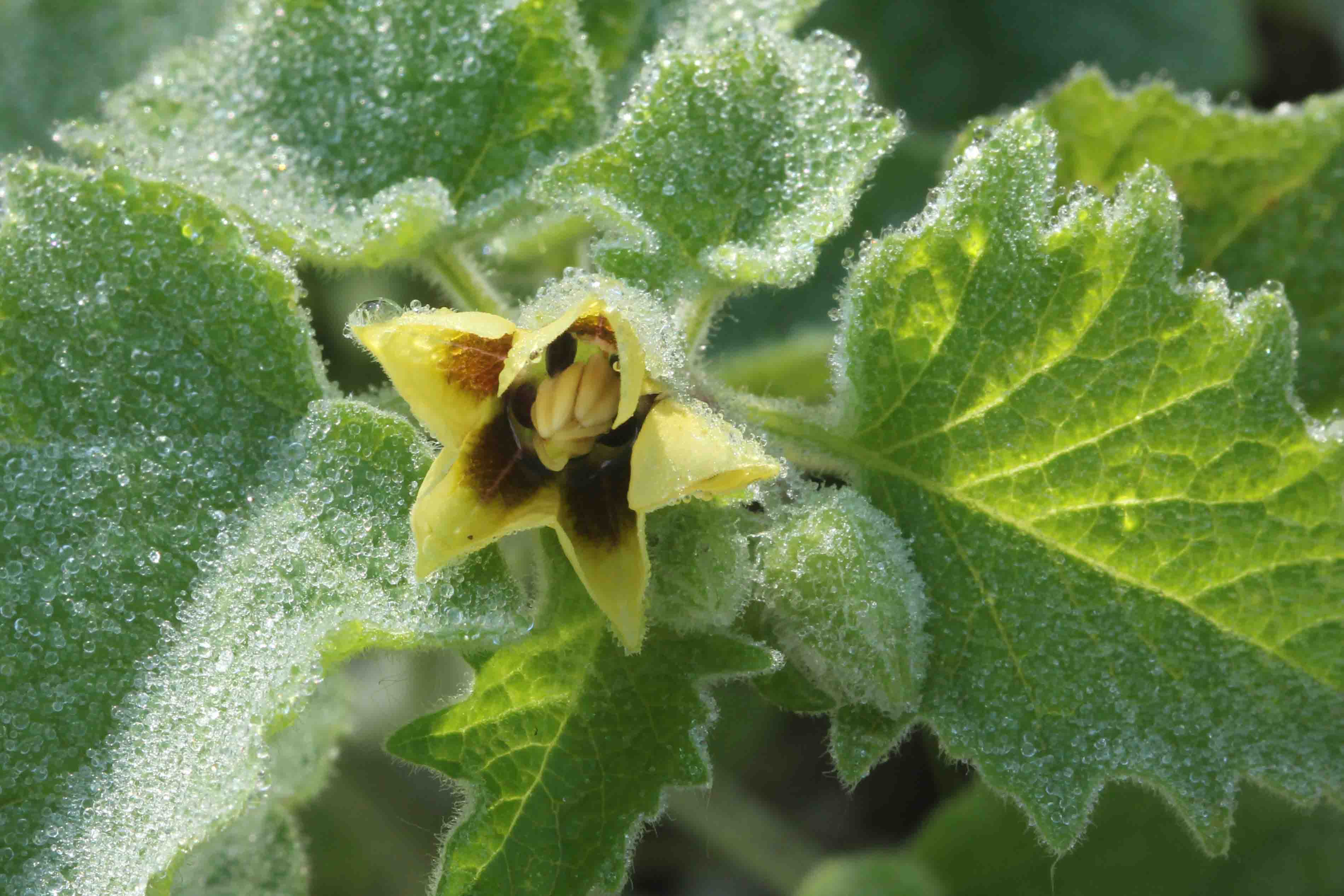
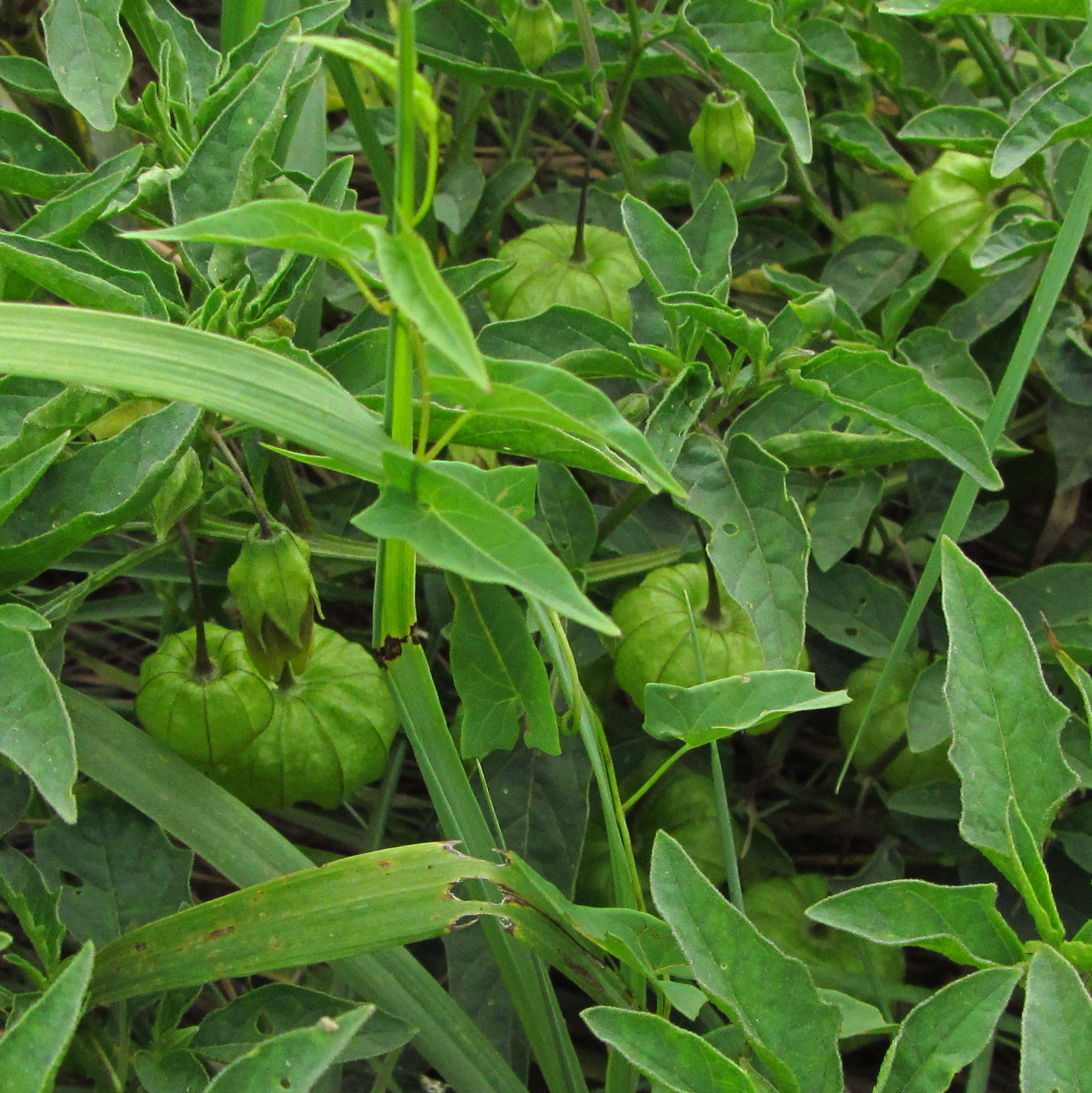
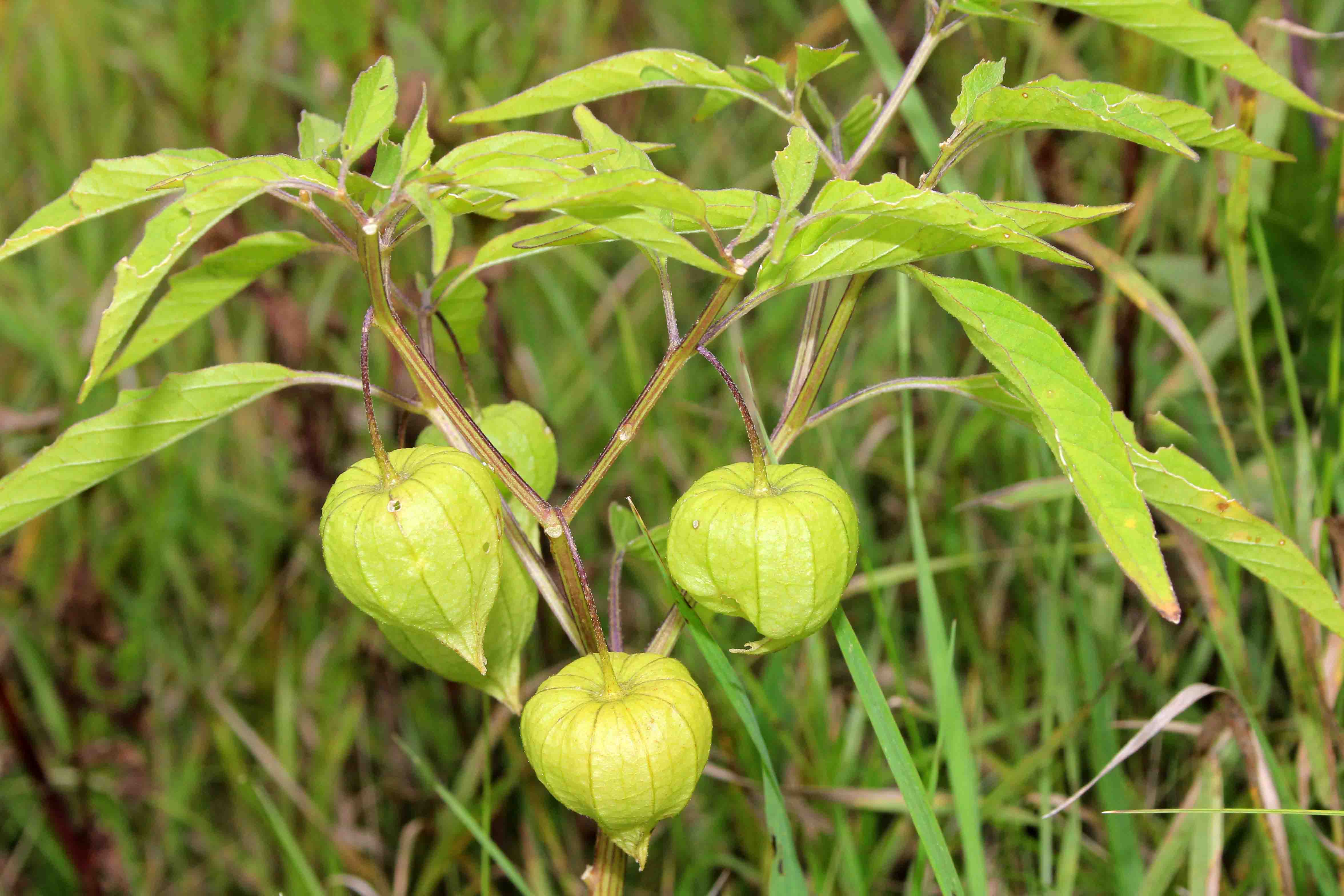
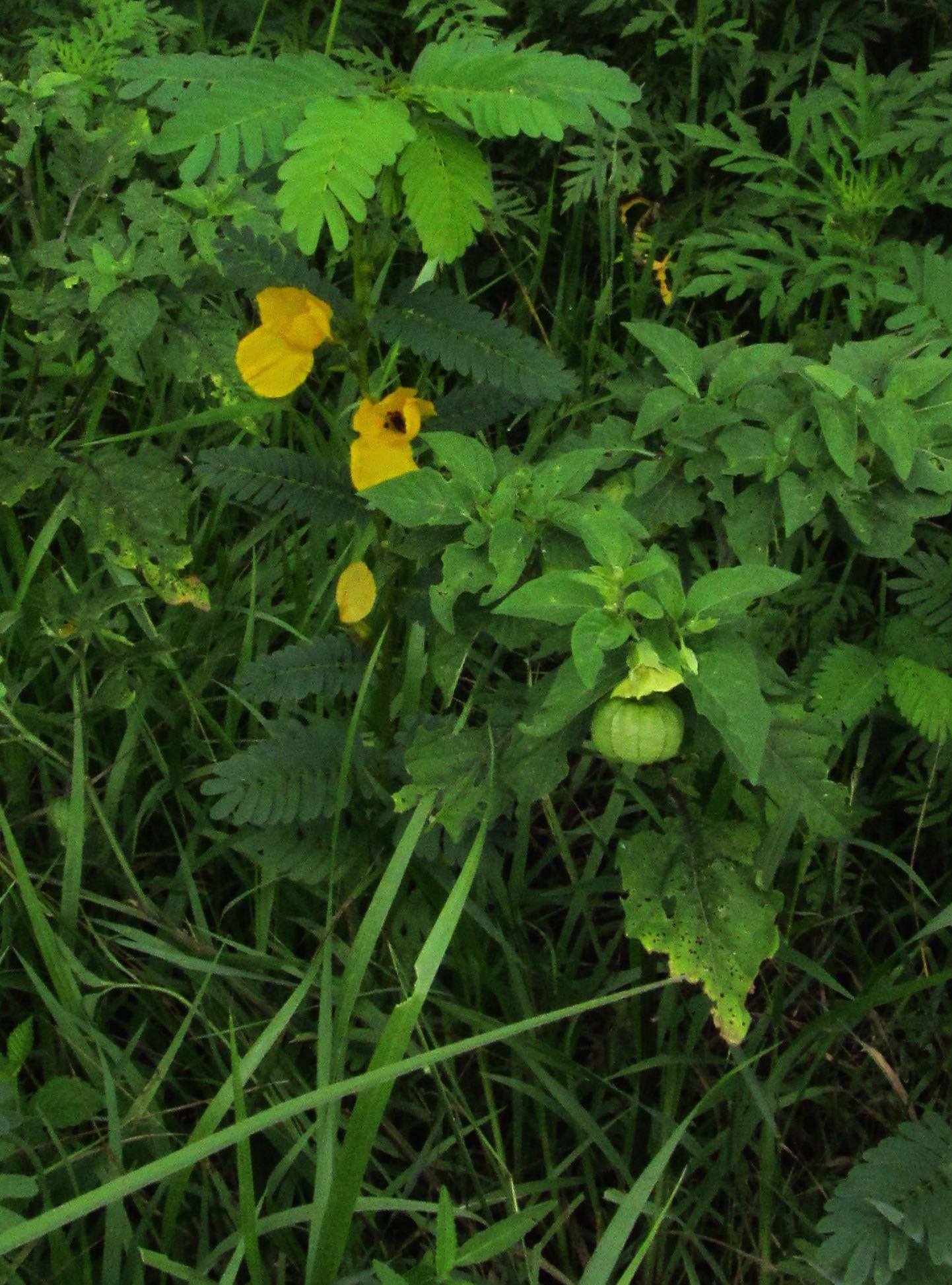

1 Comment
Thanks for the memories!
I have happy recollections of collecting the fruits of smooth ground cherry in southwest Virginia when I lived there many years ago. It was very abundant along rural roadsides. Part of collecting was enjoying the autumn colors of the mountains in early October. I made the “cherries” into jam. It tasted pretty good on toast and better when eaten as a topping on yogurt. .
Smooth ground cherry grows wild in a couple of places on my property, but I don’t cook the fruits because it’s not abundant. I scatter the fruits/seeds to try to increase the numbers of plants. I really like smooth ground cherry, but it seems to get outcompeted pretty easily by some other native perennials. I like the clammy species too, and it seems to compete pretty well on sandy soil if there is occasional light disturbance.
PrairieFan Wed 22 Aug 10:08 PM